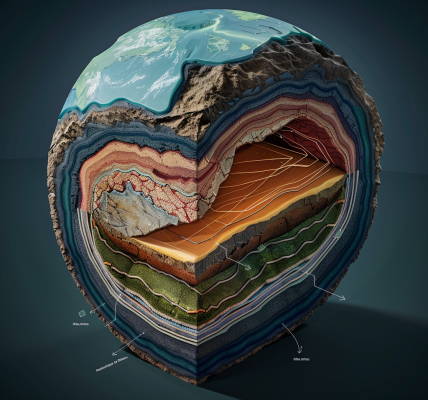The search for extraterrestrial life is targeting Jupiter’s icy moon Europa
In October, NASA plans to launch the Europa Clipper on a mission to study Jupiter’s fourth-largest moon, one of the most promising places to search for extraterrestrial life in the solar system. We’ve known of Europa’s existence for more than four centuries, but for most of that time, Jupiter’s fourth-largest moon was just a pinprick of light in our telescopes—a bright and curious companion to the solar system’s resident giant. Over the last few decades, however, as astronomers have scrutinized it through telescopes and six spacecraft have flown nearby, a new picture has come into focus. Europa is nothing like our moon. Observations suggest that its heart is a ball of metal and rock, surrounded by a vast saltwater ocean that contains more than twice as much water as is found on Earth. That massive sea is encased in a smooth but fractured blanket of cracked ice, one that seems to occasionally break open and spew watery plumes into the moon’s thin atmosphere.
Europa has captivated planetary scientists interested in the geophysics of alien worlds. All that water and energy—and hints of elements essential for building organic molecules—point to another extraordinary possibility. In the depths of its ocean, or perhaps crowded in subsurface lakes or below icy surface vents, Jupiter’s big, bright moon could host life. “We think there’s an ocean there, everywhere,” says Bob Pappalardo, a planetary scientist at NASA’s Jet Propulsion Laboratory in Pasadena, California. “Essentially everywhere on Earth that there’s water, there’s life. Could there be life on Europa?” Pappalardo has been at the forefront of efforts to send a craft to Europa for more than two decades. Now his hope is finally coming to fruition: later this year, NASA plans to launch Europa Clipper, the largest-ever craft designed to visit another planet. The $5 billion mission, scheduled to reach Jupiter in 2030, will spend four years analyzing this moon to determine whether it could support life. It will be joined after two years by the European Space Agency’s Juice, which launched last year and is similarly designed to look for habitable conditions, not only on Europa but also on other mysterious Jovian moons. Neither mission will beam back a definitive answer to the question of extraterrestrial life. “Unless we get really lucky, we’re not going to be able to tell if there is life there, but we can find out if all the conditions that are necessary for life to exist are present,” Pappalardo says.





